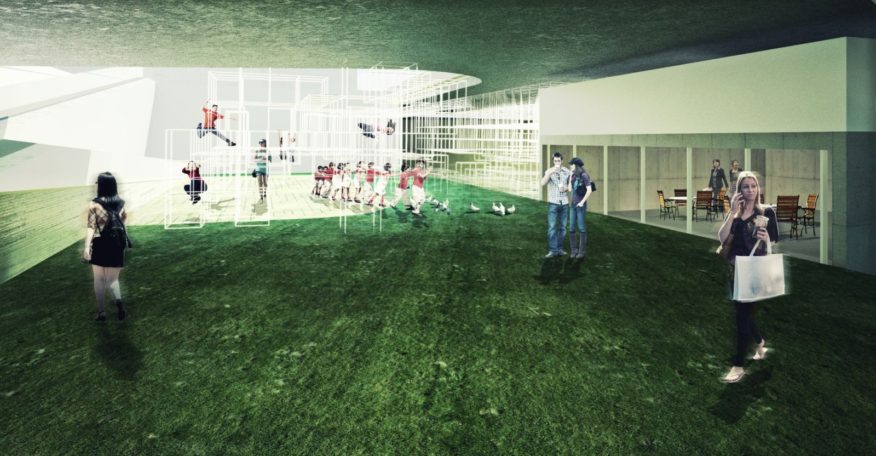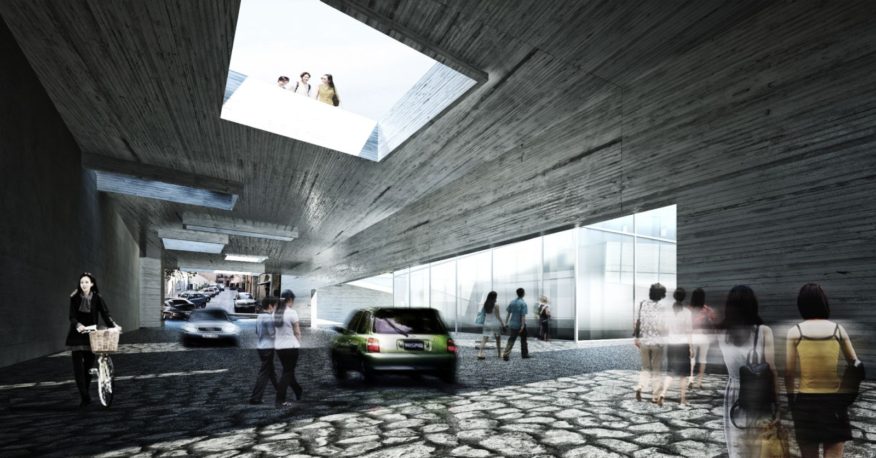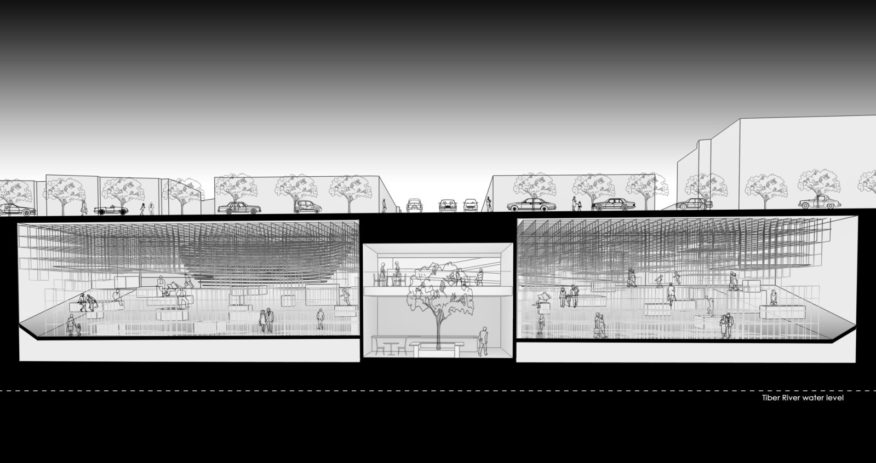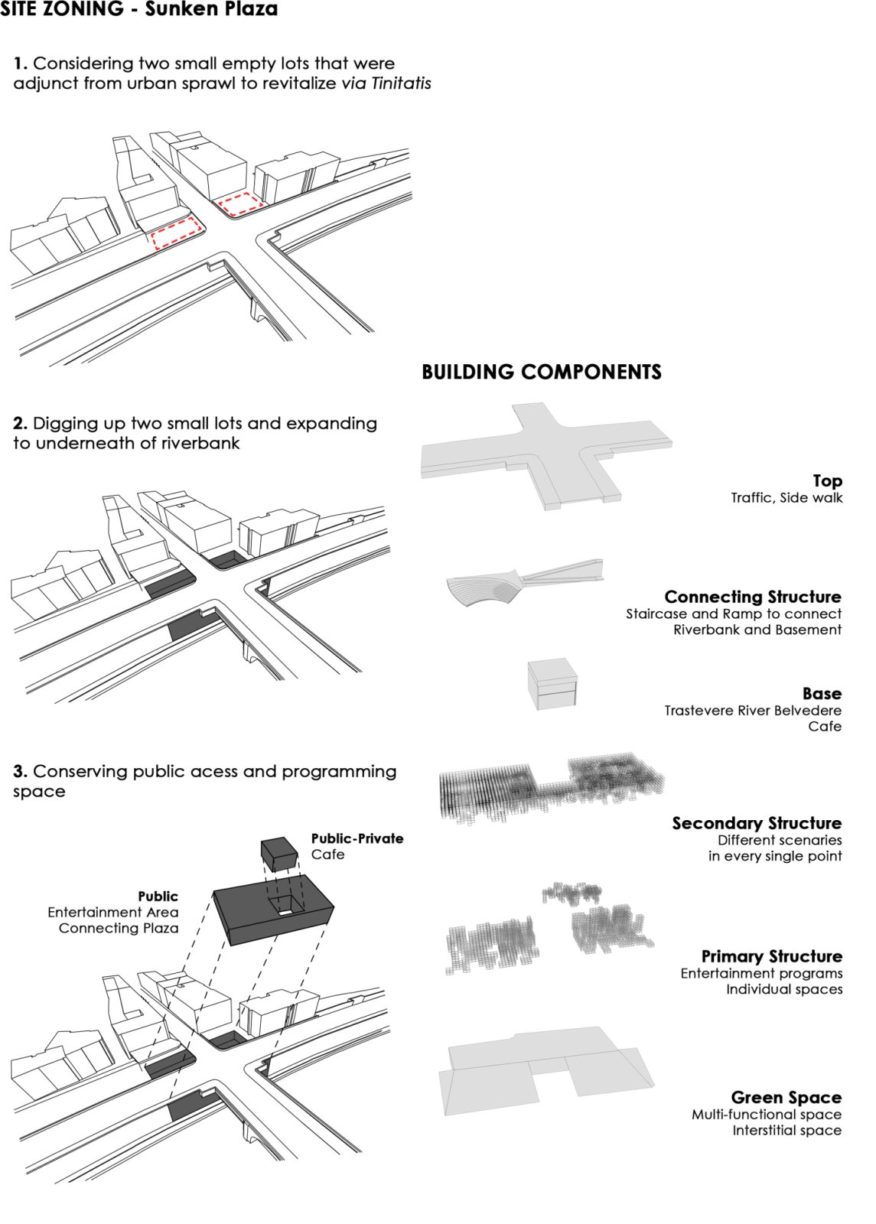
Rome is a historic and religious city with the fame and cultural heritage of ancient Rome. However, for the past 200 years, the city went through inevitable urbanization, causing critical changes.

With rapid developments and influx of numerous people to the urban area, the city has required tremendous expansion in area and amenities. Consequently, the arbitrary urban sprawl disconnected the primary flow of human traffic.

For instance, via Trinitatis was one of the most historic routes that used to connect Piazza di Spagna to Castel Sant’Angelo; currently it is partially disconnected.

To energize the segregated historical street, Via Trinitatis, it is necessary to provide plazas where people can be easily gathered.

For Italians, a plaza brings important meanings as multi-functional space for the public such as, café, market, and meeting place.

The project suggests that art and cultural programs revitalize disconnected points. The project areas gather people who were scattered by the urban sprawl to urban central place.

By creating cultural context in each disconnected point, this project delivers ‘the New Renaissance’. Source and images Courtesy of Jaehong Chung.






